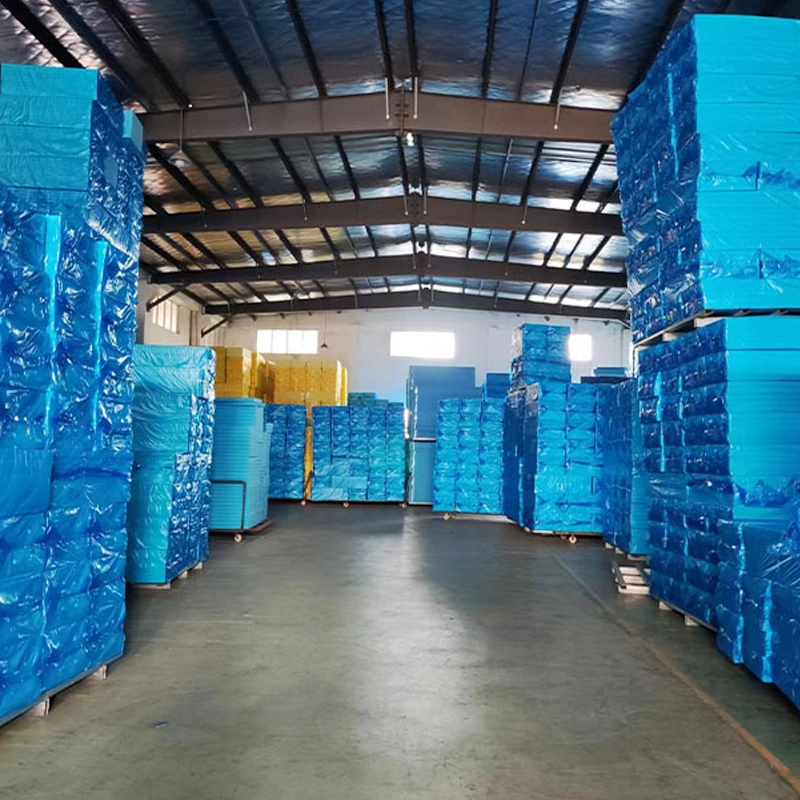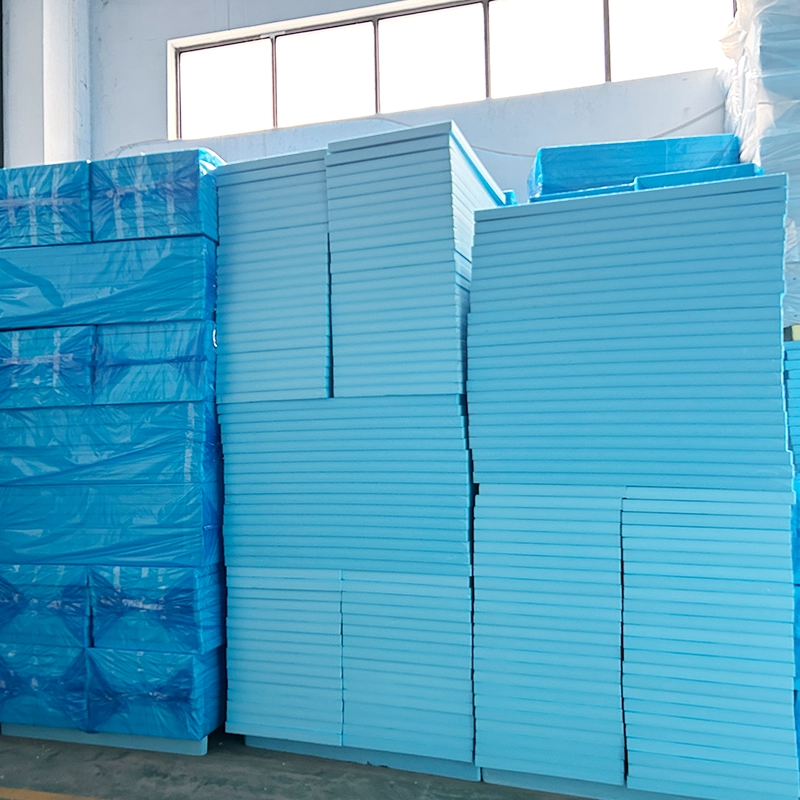Insulating your garage door sounds like such a minor home improvement—but the 2 simple reasons behind that title are surprisingly powerful: enhanced thermal comfort and effective noise reduction. When those two needs intersect with smart material choice, homeowners win. Enter Expanded Polystyrene (EPS)—a rigid foam board material that offers excellent R-value, affordability, and ease of installation. In this post, you'll discover how EPS directly addresses those two reasons and why incorporating it into your garage door insulation plan makes perfect sense.
Reason 1 – Improved Thermal Comfort & Energy Efficiency with EPS
How Expanded Polystyrene (EPS) slows heat transfer and raises R-value
EPS is a closed-cell rigid foam with a high thermal resistance. It delivers one of the best R-values per dollar among rigid insulations—a critical factor when you're working within budget yet aiming for real comfort gains.
Seasonal comfort gains: hot summers, cold winters
By bridging the thermal gap that a bare metal garage door creates, EPS can dramatically regulate interior temperature. Whether you're using your garage as a workshop or it serves as an entry buffer, expect to see multi-seasonal comfort with noticeably reduced temperature swings.
Energy cost comparisons: EPS vs uninsulated or other insulations
Plain doors allow heat to flood in or escape easily, upping your HVAC's workload. Rigid EPS panels slow that transfer and lead to real energy savings, especially in attached garages where heat transfer affects the entire house.
Reason 2 – Enhanced Noise Reduction with EPS Panels
How EPS attenuates sound—material properties & real-world effects
EPS helps dampen sound thanks to its cellular structure, which absorbs vibrations more effectively than rigid metal. This makes the garage noticeably quieter—especially important if it doubles as a workspace or media prep hub.
Improving garage privacy and usability as a workshop or living space
Quiet isn’t just comfort—it’s privacy and expanded usability. Whether you're tinkering away late or cranking up tunes, EPS insulation helps keep noise contained and distractions out.
EPS vs fiberglass or spray foam in noise control
Fiberglass batt dampens sound too—but it's bulkier and messier to install. Spray foam seals gaps well but is costly. EPS offers a great balance of clean installation, cost, and acoustic benefit.

Why Choose Expanded Polystyrene (EPS) for Garage Door Insulation
EPS typically offers R-4 per inch at low cost—making it one of the best value materials when improving thermal resistance on a tight budget.EPS is easy to cut with a utility knife and snaps into the grooves of sectional doors. You don’t need professional tools—just time and basic measuring.
XPS edges out EPS slightly in R-value but costs more and is less eco-friendly. Polyurethane has the highest R-value but requires professional installation and higher expenses. EPS hits the sweet spot for DIYers seeking balance.
Practical Installation Tips for EPS on Your Garage Door
Necessary tools, safety, and measurement tips
You’ll need a measuring tape, straight edge, utility knife, adhesive or double-sided tape, and perhaps protective gloves. Measure panel dimensions between door ribs carefully for tight, secure fitting.
Step-by-step installation outline using EPS panels
Measure each door panel section.
Cut EPS foam to match dimensions.
Apply adhesive or tape to panel backs.
Press panels into the sections, ensuring alignment.
Allow adhesive to set, and test door operation to confirm clearance.
Avoiding common pitfalls: alignment, adhesive, door motion clearance
Misaligned panels can cause door binding. Don’t use overly thick board—ensure insulation stays clear of torsion hardware. Choose adhesives that won’t degrade EPS over time.
Addressing Potential Drawbacks and Mitigating Them
Weight/load considerations on springs and tracks of older doors
EPS is lightweight, but thick boards might slightly load old springs. If your door already struggles, consider spring replacement or using thinner EPS.
Durability: moisture, pests, and protecting EPS edges
EPS resists moisture better than fiberglass but still benefit from edge sealing. Use weatherstripping and protect edges from critters or accidental knocks.
When high-performance alternatives (polyurethane) might be worth it
If you live in extreme climates or need top-tier R-value—and cost is less of a concern—polyurethane may outperform EPS. But for most, EPS delivers actionable performance at a fraction of the cost.
Quantifying Benefits: Table Comparison
| Feature | Uninsulated Door | EPS Panels (DIY) | Polyurethane (Pro) |
| R-Value per inch | ~0 | R-4 | R-6 to R-8 |
| Noise Reduction | Low | Moderate–High | High |
| Cost per ft⊃2; | Low | Low–Moderate | High |
| Installation Ease | N/A | DIY-Friendly | Professional Needed |
| Long-Term ROI | None | Moderate to High | Highest, if budget allows |
ROI Estimate Example: Installing EPS might cost around $100–$200 in materials but reduce seasonal cooling/heating load—leading to noticeable savings over time, plus improved comfort.
EPS kits are far cheaper and customizable; pre-insulated doors cost much more. If your existing door works fine mechanically, EPS retrofits are a smart upgrade.
Real-World Use Cases & User Scenarios
Workshop garage kept comfortable for year-round use
Home mechanics or hobbyists report that EPS-insulated garage doors stay 15–20°F cooler in summer, making projects usable year-round instead of just shoulder seasons.

Garage attached to living space, improving overall home envelope
When the garage shares a wall with conditioned rooms, EPS insulation can help stabilize indoor temperatures, reducing drafts and lessening strain on HVAC systems.Many homeowners choose EPS for its ideal mix: low cost, simple DIY installation, and tangible gains in comfort and noise control.
Conclusion
The two simple reasons—enhanced thermal comfort and improved noise reduction—are compelling enough on their own to motivate garage door insulation. When you choose Expanded Polystyrene (EPS), you get unrivaled value, DIY ease, and real-world performance. Instead of expensive replacements or complex retrofits, snap in some EPS panels, and you’ll immediately feel the difference. Ready to make your garage quieter and more comfortable, affordably? Let EPS get you there.
FAQ
1. Is EPS safe and eco-friendly?
Yes—EPS is inert, non-toxic, and recyclable. It also offers energy savings that reduce your carbon footprint.
2 .Will insulating the door hurt opener mechanisms or springs?
EPS is lightweight. If your door operating mechanism is in good shape, there’s minimal impact. However, older doors with weaker springs may benefit from spring tuning.
3 .How thick should EPS panels be for optimal performance?
Aim for 1–2 inches thick. This gives a good R-value while fitting comfortably in standard sectional doors without compromising clearance.
4. Can I combine EPS with other insulation methods in garage?
Absolutely—EPS on the door works well alongside wall or ceiling insulation like fiberglass, spray foam, or cellulose to create a holistic thermal envelope.
5 .How long does EPS insulation last on a garage door?
With proper installation and maintenance, EPS panels can last 10 years or more, as they resist moisture, mold, and degradation when protected.






